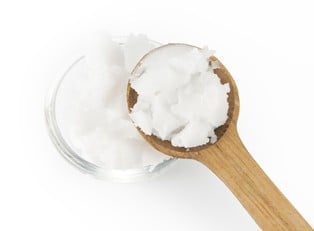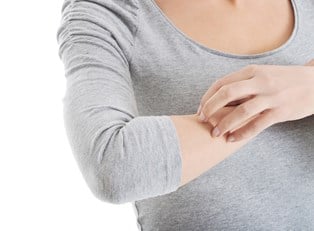Eczema is a chronic form of skin inflamation also called dermatitis; the word comes from Greek meaning "to boil over." The skin disorder we know of as eczema has been known for well over a century, and books have been written on it that date back to as early as 1861, and much the information contained in them is still of use in diagnosing eczema symptoms and in treating and even preventing the disease. An example of such a book is "Eczema: A Consideration of Its Course, Diagnosis, and Treatment, Embracing Many Points of Practical Importance, and Containing 146 Prescriptions, Illustrating Dosage in Local Applications" by Philadelphia dermatologist Dr. Samuel Horton Brown, published in 1906.
Eczema symptoms include redness of the skin; vesicles (pimples filled with fluid); crusts and scales on the skin; itching; dryness; and bleeding. In some forms, such as e. madidans, there is much oozing or discharge; and e. sclerosum is characterized by markedly thickened or leathery skin. So- called "weeping rash" is another of the more repulsive eczema symptoms, in which water oozes from the reddened skin. Eczema symptoms in children manifest themselves most commonly on the neck, the face, and the inner legs and arms; and babies most typically show eczema symptoms on their scalps, cheeks, and legs.
Causes of the skin disorder fall into two main groups- internal and external. The most internal cause is probably malnutrition; less common ones include dentition, asthma, nerve disorders, and pregnancy. More serious diseases such as diabetes have also been known to be accompanied by the skin disorder. Of external causes, local irritation is most commonly associated with the skin disorder. Such irritations may be the result of contact with soap, a poisonous plant, antiseptics, flour, sugar, or tobacco. Extreme heat or extreme cold may cause eczema (the skin disorder is notably common in winter), as can excessive moisture.
There are many different kinds of eczema. By far the most common is atopic dermatitis, which has a way of coming and going. It has been caused by molds and pollen, by irritants like soap and jewelry containing nickel, and by allergies relating to food or some other factor. It most commonly develops in infants. Contact dermatitis is so called because it begins in an area that has come into contact with some allergen, such as poison ivy or any of the irritants mentioned above in connection with atopic dermatitis. Nummular eczema is characterized by regions of irritated skin that are shaped like coins (the word "nummular" has the same root as "numismatics," or coin collecting). Such patches should not be scratched, as this will only irritate them. Neurodermatitis (alternately, lichen simplex chronicus), more common in women, produces patches of irritated skin that can become leathery; it can be worsened by stress. Seborrheic dermatitis, the cause of which is not known at present, commonly produces excessive dandruff in infants.
Eczema has no known cure, and so treatment of the skin disorder consists of alleviating eczema symptoms. Oftentimes such involves the use of antihistamine, hydrocortisone, or some other anti- itch medicine, or of drugs called corticosteroids (hormones that are manufactured in the adrenal cortex); the latter, however, are known to produce side effects such as atropied skin. Tacrolimus (also called Fujimycin) is an immune suppression eczema drug that was developed in 1984; unfortunately, this and other drugs of its type are known to cause cancer. Moisturizers can be used to relieve skin dryness.




